Meru Monastery is also known as “Meru Gonsar” and “Meru Dratsang,”
In AD 1751, construction of this monastery began. It is a Gelug pa monastery of Tibetan Buddhism
It is located at No. 11, Beijing Middle Road, Lhasa. Just a door apart, the serene atmosphere of Meru Monastery contrasts sharply with the bustling and lively Beijing East Road.
Today, it occupies only a small portion of the original Meru Monastery buildings, with the rest being used by the Tibetan Buddhist Association’s printing house.
In Lhasa’s urban area, there are a total of two Meru Monasteries, known respectively as “The New Meru Monastery” and “The Old Meru Monastery.”
“The Old one,” also known as “Meru Nyingpa,” is located to the east of Jokhang Temple, separated only by a wall.
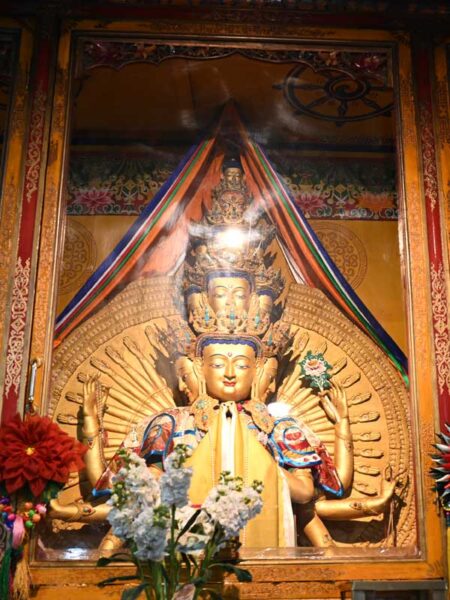
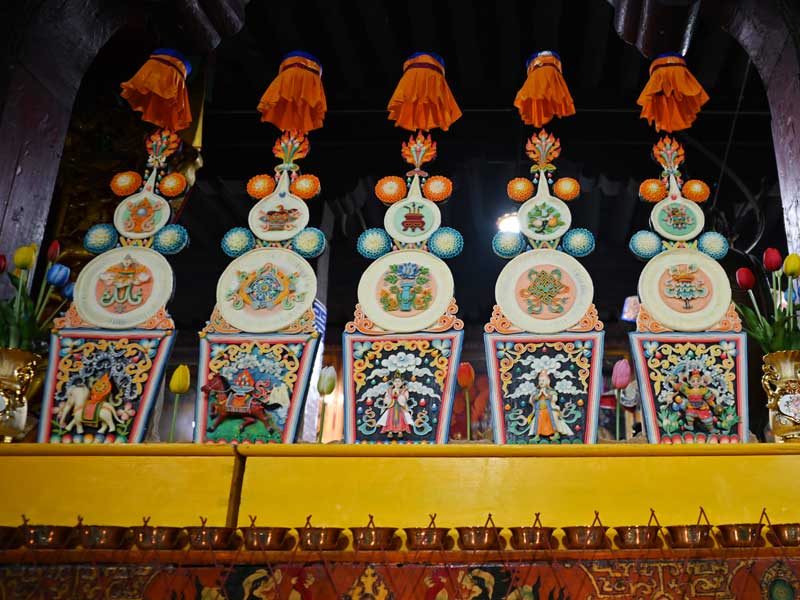
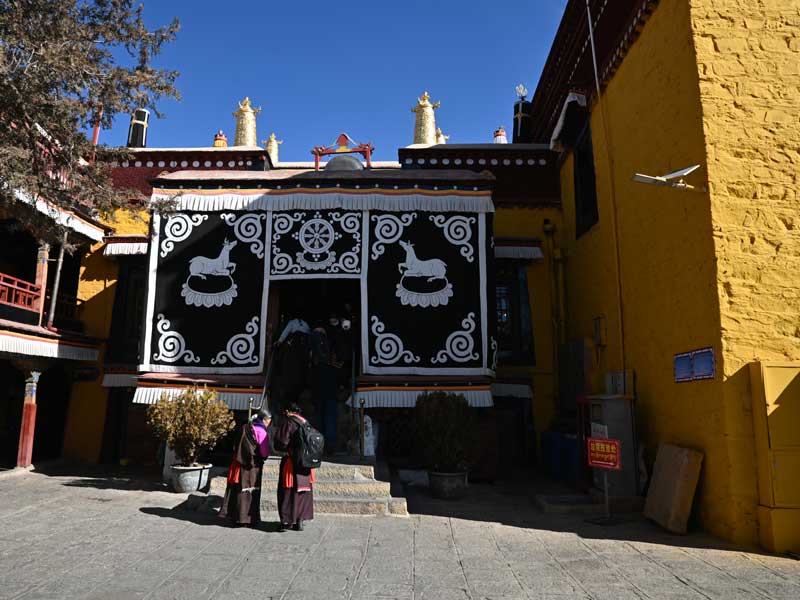
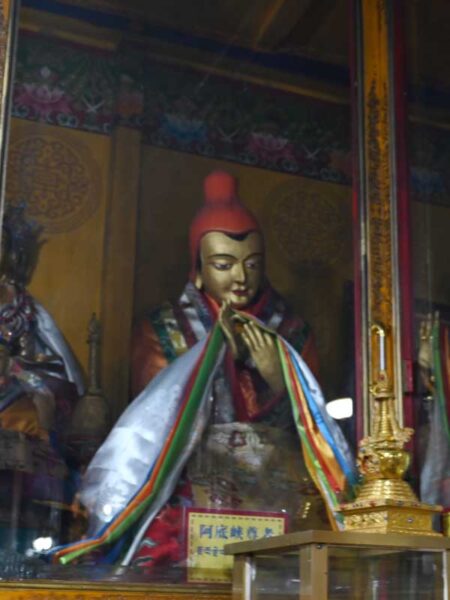
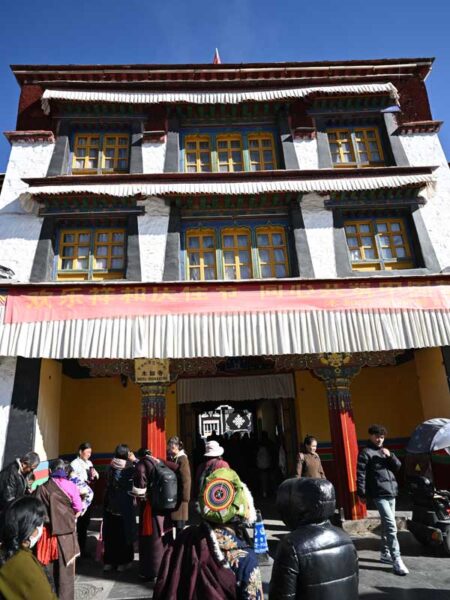
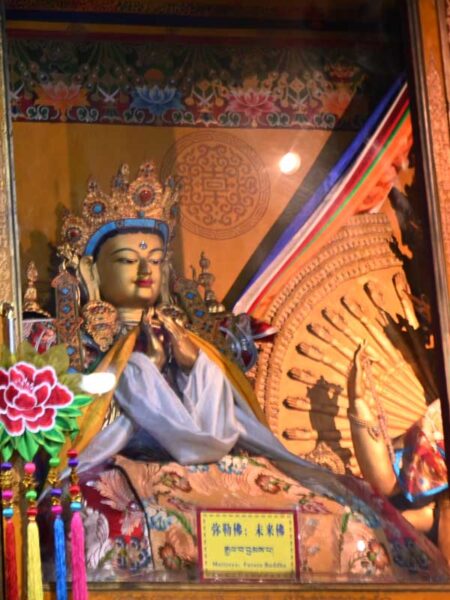
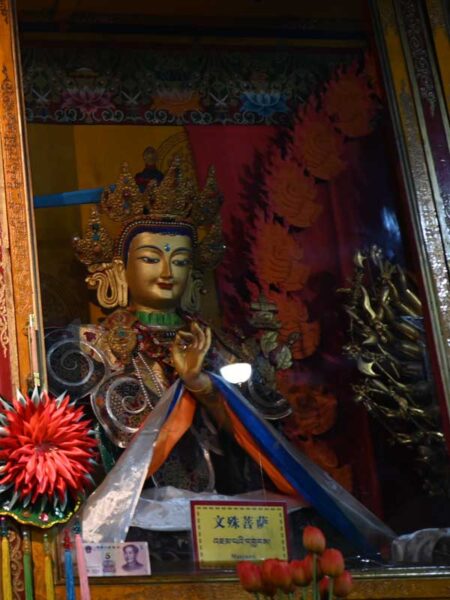

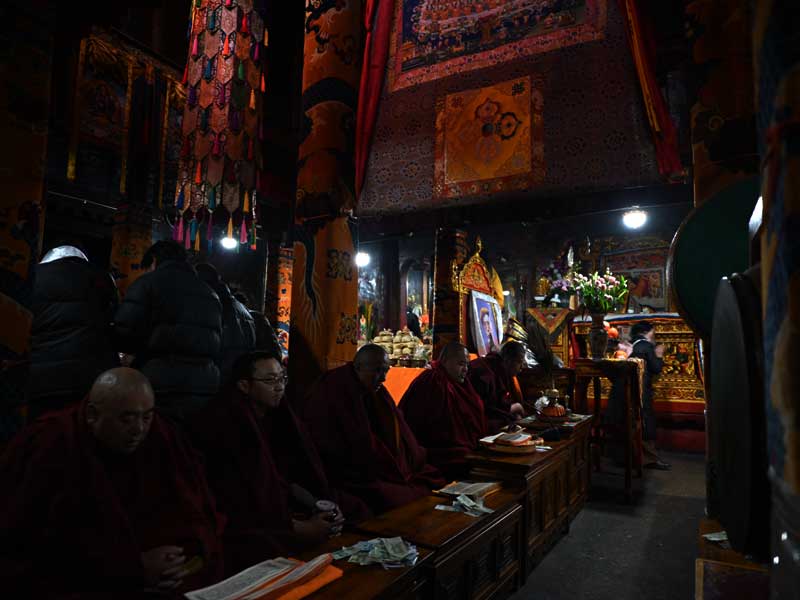
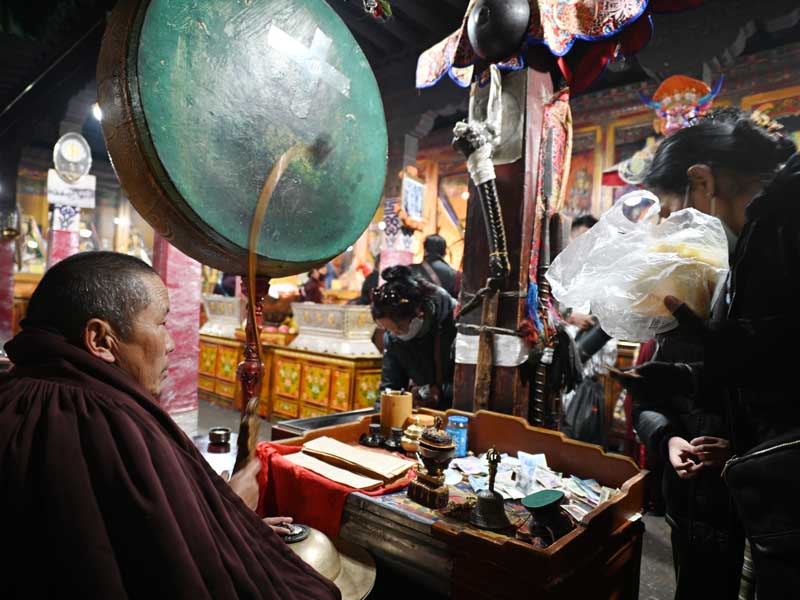
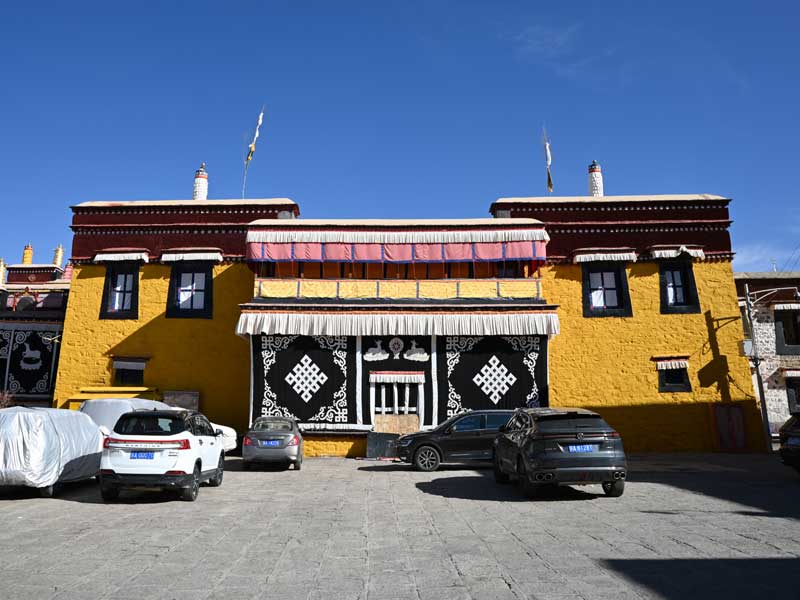
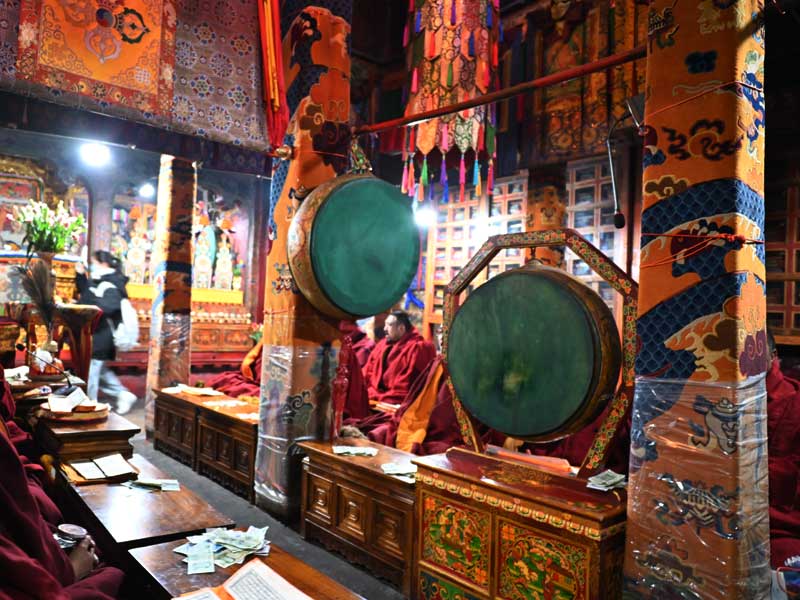
Brief History
In 1654, after the death of Gushri Khan in Lhasa, the Fifth Dalai Lama began constructing the new Meru Monastery in 1751 AD to perform rituals for his soul.
In 1790, the Seventh Dalai Lama and Tibetan King Polhanai bestowed the properties of Nangdze Deri Yoten Shika, Nangdze Nyixiu, Langri Gongma, and Samdru Kongsar to the Monastery.
It is located approximately 200 meters southeast of the Ramoche Monastery.
The predecessor of the present-day Meru Monastery was Meru Nyingpa, located behind the Jokhang Temple, also known as the old Meru Monastery.
Due to the limited space around Meru Nyingpa for expansion, during the Thirteenth Dalai Lama’s time, the Dharmar King of Nechung Monastery, Shakya Yabei, presided to expand the monastery
Thus, the original one came to be known as “Meru Nyingpa,” meaning “Old Meru,” in contrast to the “new one.”
After the construction of Meru Monastery, initially, Meru Nyingpa was the main monastery and Meru Monastery was its branch.
After Meru Monastery was expanded, it became the main monastery, and Meru Nyingpa became its branch.
After 1959, it was used by the Tibetan Autonomous Region Drama Troupe. Later, the drama troupe built new premises elsewhere and moved out of the monastery.
Besides the drama troupe, the Tibet Grain Bureau also occupied the monastery for a time.
After the “Tibetan Drama Troupe” and “Tibet Grain Bureau” successively moved out, the monastery was fully taken over by the Tibet Buddhist Association.
In 1980, the Tibet Buddhist Association relocated the Tibet Printing House from the Lower Tantric College (Gyümé Dratsang) to this monastery.
The Tibet Printing House, established in the 1980s, remained the only Buddhist scripture printing house in Tibet into the early 21st century. The printing blocks were carved in Nimu before being transported to the printing house for scripture printing.
The Tibet Printing House uses ancient engraving printing techniques and houses 128,000 rectangular woodblocks of 320 Tibetan Buddhist texts. The Lhasa edition of the Tibetan Buddhist canon “Tanjur” is printed here.
Subsequently, Meru Monastery gradually recovered. However, the main hall of the past now belongs to the printing house (mainly used for storing the woodblocks for scripture printing), while the current main hall of Meru Monastery is the former protector deity hall.
Architecture
Meru Monastery faces south, with a length of 102 meters from north to south, a width of 85 meters in the front and 97 meters in the back from east to west, covering an area of 8,925 square meters, and comprising over 300 rooms.
The monastery’s architecture rises from front to back. In the past, the front part of the monastery housed the monks’ quarters, while the back part contained the main hall (now occupied by the printing house).
The monastery is a typical Tibetan courtyard style, but upon entering the main gate, one can see a tall Chinese-style building running north-south in the center of the courtyard.
This Chinese-style building was originally a theater used by the Tibetan Autonomous Region Drama Troupe in the 1950s and 1960s. It later became the printing area for the Tibet Buddhist Association’s printing house.
Walking to the left of the courtyard, past an incense burner and a row of prayer wheels, you will find the current main hall of Meru Monastery.
The first floor of the main hall has a large assembly hall in the front half and a Buddha hall in the back half.
The assembly hall spans 54 meters in width and 42 meters in depth. The Buddha hall consists of three rooms, with the central Buddha hall being nearly square, measuring 11 meters in length and 10 meters in width, covering an area of 110 square meters. The side Buddha halls are smaller.
The monks’ quarters are located on the east, south, and west sides of the monastery, each with three stories. The first floor is 3.5 meters high, the second floor is 2.4 meters high, and the third floor is 2.7 meters high.
The layout of the western monks’ quarters is the most distinctive, with two rows of north-south oriented quarters at the front and back, separated by a narrow courtyard, and a row of north-south oriented quarters on the east side.
The area north of the incense burner belongs to Meru Monastery and is managed by it. The rest of the courtyard belongs to the Tibet Buddhist Association and houses the workers and families of the printing house.
Exiting through a side door on the west side of the current main hall leads to the monks’ quarters and dining hall of Meru Monastery.
Walking to the right side of the courtyard leads to the Tibet Buddhist Association’s printing house.
The wall next to the main entrance of the printing house is decorated with Buddhist-themed murals.



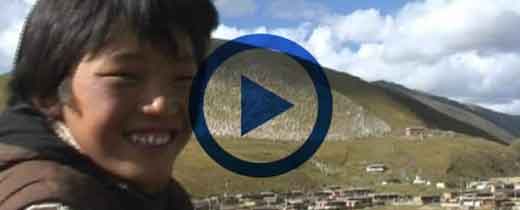
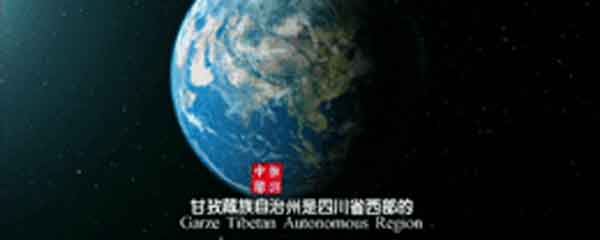
Leave a Reply